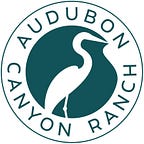Conservation science benefits from collaboration; new paper in Waterbirds
New collaborative research shows how Great Egrets adjust daily flight patterns to feed their growing families.
By David Lumpkin and Scott Jennings, Avian Ecologists
Conservation science works best when practiced as a team sport. When we share ideas, data, methods, and information, we can so learn more about the natural systems we’re trying to protect, compared to if we work in isolation. A new paper published in the scientific journal Waterbirds is the most recent example of how scientists at ACR’s Cypress Grove Research Center collaborate with researchers from across the country-and for the benefit of stronger, more impactful research.
The complete article is “ Seasonal Patterns in Daily Flight Distance and Space Use by Great Egrets (Ardea alba)” in Waterbirds. Scientists who contributed to this paper include J.N. Brzorad, M. C. Allen, S. Jennings, E. Condeso, S. Elbin, R. Kays, D. Lumpkin, S. Schweitzer, N. Tsipoura, and A. D. Maccarone (2022).
New Research Suggests That Tagged Egrets Flew Farther During Breeding Season
In this paper, we joined several coauthors including Drs. John Brzorad and Alan Maccarone, who travelled to California in 2017 to teach us egret trapping. Audubon Canyon Ranch’s Great Egret trapping project is a mirror of projects John and Alan helped establish in Kansas, North Carolina, and New York.
Five years on, all these projects have collected a tremendous amount of data-over 1.3 million GPS points. Dr. Brzorad recently led an effort to combine all this data to better understand the daily movements of tagged Great Egrets.
Habitats Also Influence How Egrets Use a Space
Great Egrets foraging strictly in freshwater used around half the area of those using tidal sites. Changing tides shift the areas available to foraging egrets throughout the day, so may dictate foraging opportunities in a way that freshwater systems do not. But there may be more effects, such as shape of coastline relative to roost or colony sites, or relative food availability at play.
By collaborating and combining data with colleagues, we found consistent patterns in movement by Great Egrets living in very different parts of North America. As parents fly farther to get more food for their growing chicks, they expend more energy and are at greater risk of predation or accidental injury. When they aren’t raising young, they can travel more widely — or even migrate — to find the best foraging habitat.
These results improve our understanding of the scale of landscape conservation needed for Great Egrets to continue to thrive: only protecting wetlands near breeding sites may not provide sufficient habitat for these birds throughout the year.
To read additional research from Audubon Canyon Ranch, please visit Scientific Publications.
Originally published at https://egret.org on May 3, 2022.
